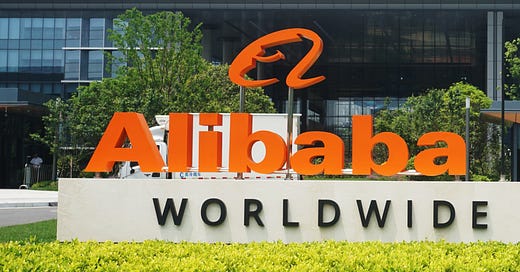Alibaba Merges Domestic and Global E-Commerce in Major Shake-Up
Alibaba's E-Commerce Revolution: One Division with Global Ambitions
Alibaba is restructuring its e-commerce operations following Double 11.
In an internal email on November 21, CEO Eddie Wu revealed plans to merge its domestic and international e-commerce businesses into a single division. The new unit, led by Jiang Fan, combines major platforms like Taobao, Tmall, and Alibaba International Digital Commerce Group (AIDC). Jiang will report directly to Wu.
The new group will integrate Taobao, Tmall, 1688, Xianyu, and Alibaba International Digital Commerce Group (AIDC), forming a unified business entity covering both domestic and global markets.
This change reflects Alibaba's continued focus on its core business and Eddie Wu's strategic outlook on the future of e-commerce. "E-commerce in China and globally is entering a new era, where global supply chain, fulfillment, and consumer service capabilities will define future competition." Wu stated in the email.
Taobao Goes Global
Earlier this year, Alibaba took key steps to integrate its domestic and international e-commerce operations.
In March, the company implemented a policy allowing employees to transfer between groups, such as Taobao, Tmall, and AIDC, without losing seniority. The move aimed to improve collaboration across its e-commerce units.
In July, Taobao launched a free shipping program for fashion items through its "Taobao Overseas" feature, targeting regions like Singapore and Korea and focusing on overseas Chinese customers. By September, the initiative was expanded to cover all product categories.
Taobao Overseas is still in its early days, operating through a semi-managed model. Merchants are tasked with shipping products to domestic consolidation warehouses, creating overseas storefronts, writing product descriptions with the help of AI translation tools from Taobao, and managing pre-sale inquiries. The platform itself takes care of logistics and customs clearance.
This setup demonstrates deeper integration between Taobao and AIDC. Taobao focuses on supply and business development, while AIDC handles logistics and international consumer operations. Popular products from Taobao Overseas are also available on AliExpress and Lazada.
During this year's Double 11, Taobao used AIDC's overseas payment and logistics infrastructure, along with subsidized shipping, to expand free shipping zones to 10 countries. As a result, Taobao Overseas saw its new users double year-over-year, while sales of free-shipping products in Taobao Hong Kong jumped 600%.
Jiang's Comeback
Jiang Fan's return to Alibaba has drawn attention as well. Once seen as Jack Ma's successor, Jiang took on the role of AIDC CEO in 2020 after a scandal.
Over the past three years, He has introduced a "2+4" structure, with two cross-border platforms (AliExpress, Alibaba.com) and four localized platforms (Lazada, Miravia, Trendyol, Daraz). He also launched full-service, semi-managed, and self-operated models to increase flexibility and efficiency.
Under Jiang's leadership, Alibaba's strategy has become more focused. AliExpress now leads cross-border trade, while Lazada oversees localized e-commerce. Their commercial teams were integrated to prevent internal competition and improve collaboration. Lazada, after its largest-ever reorganization, posted its first monthly profit in 12 years.
The global e-commerce landscape is becoming increasingly competitive as Temu, SHEIN, and TikTok Shop expand aggressively. Alibaba, once a dominant player, is now lagging behind, though its international business has shown strong growth under Jiang Fan over the past three years.
In the third quarter, Alibaba's overseas revenue rose nearly 30% compared to the same period last year, more than twice the growth rate of its second-strongest segment, local services. International e-commerce now contributes 13.4% of the group’s total revenue, making it the second-largest segment after domestic e-commerce. However, this growth has been costly—losses for the division widened to 2.9 billion yuan ($400 million), over seven times the loss recorded in the same quarter last year.
This restructuring marks a critical moment for Alibaba. For the first time, the company has combined its domestic and international e-commerce operations under one leader.




